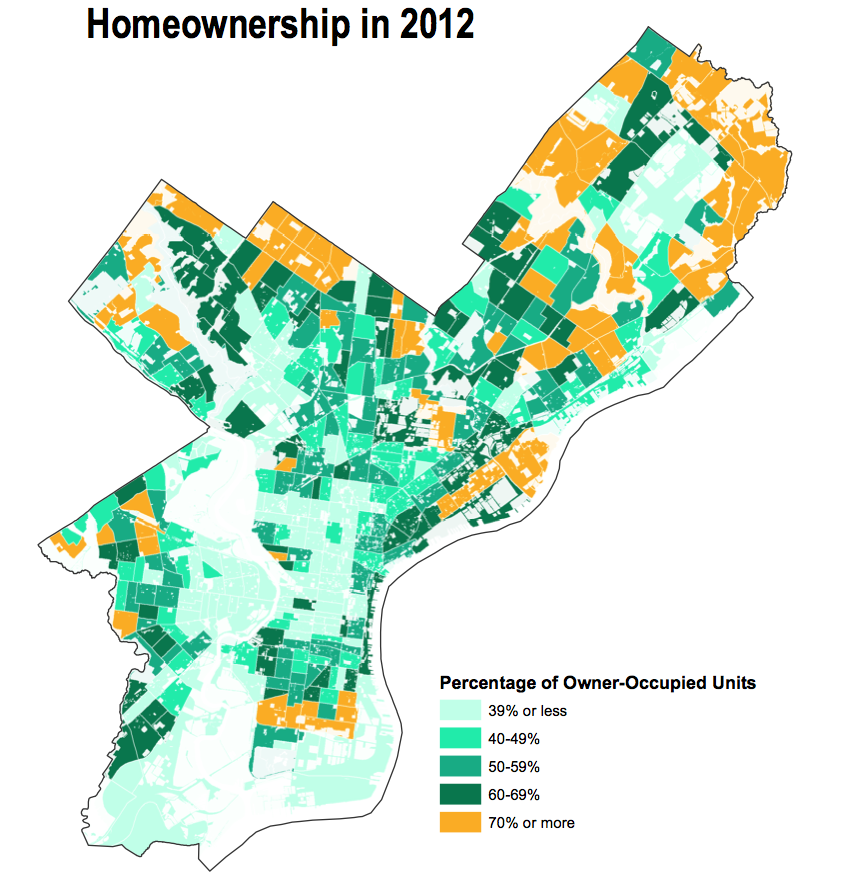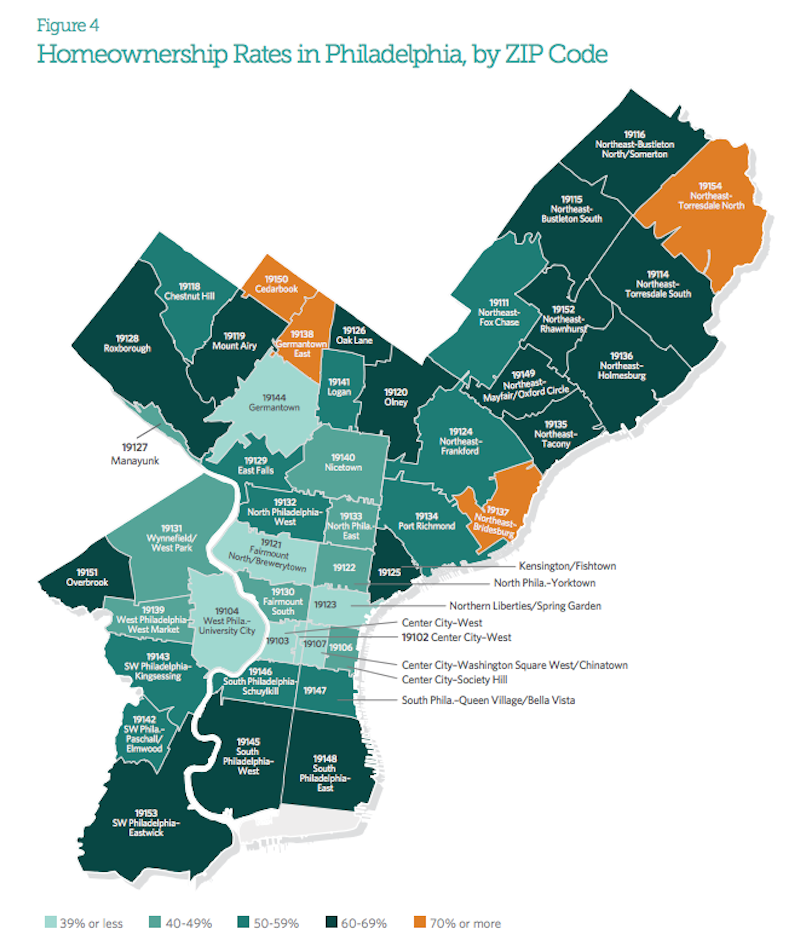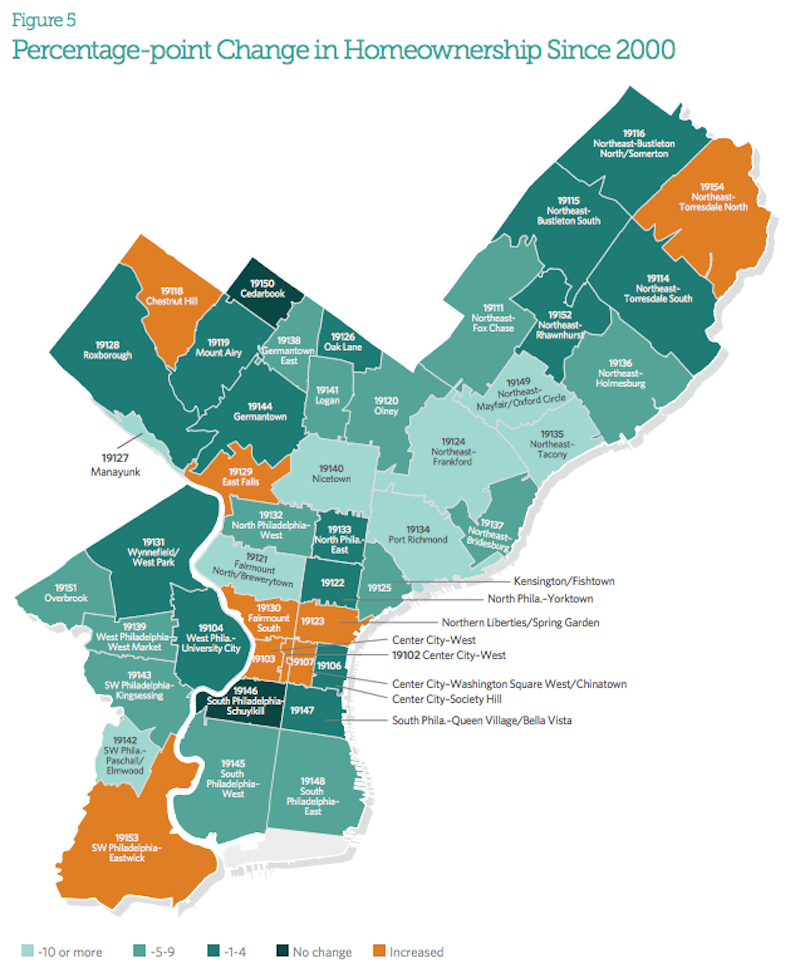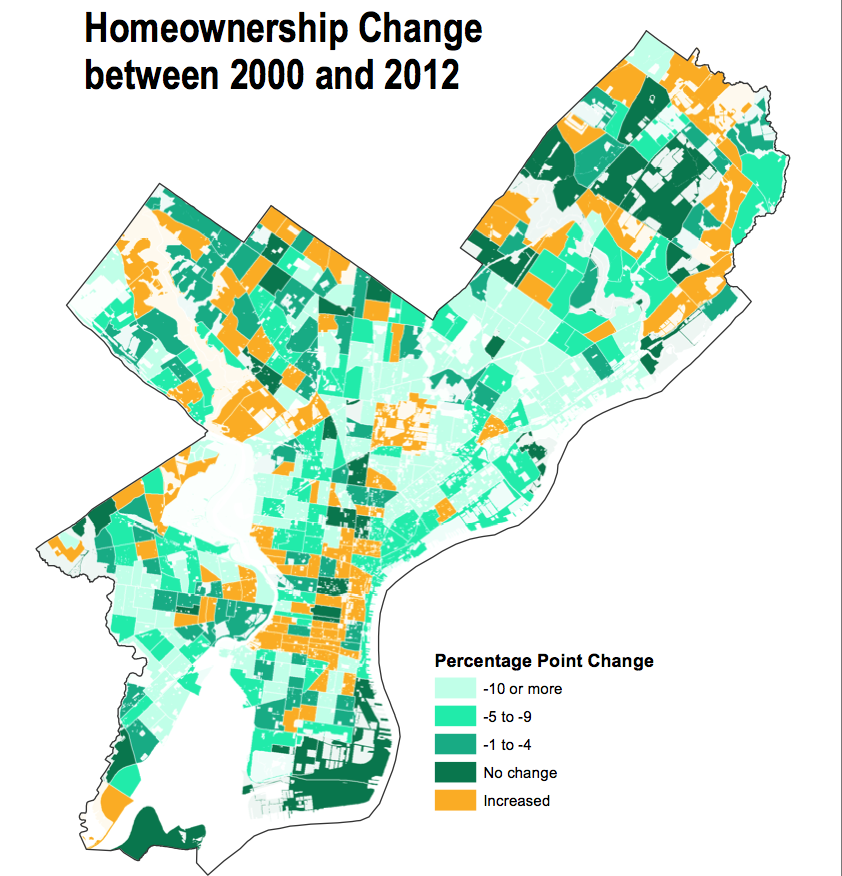Maps: Homeownership is declining in Philly. Is that a bad thing?

Last week Kellie Patrick Gates wrote about the new Pew Charitable Trusts report, Homeownership in Philadelphia: On the Decline, which included some maps visualizing 2012 homeownership, and homeownership changes since 2000, by zipcode. We asked PennPraxis’ Ryan Debold to map the same information by Census tract.
Here are the Pew maps:
And here are PennPraxis’ maps, breaking that down by Census tract:
Just a quick note on what you’re looking at here: The first Praxis map shows homeownership (owner-occupied units) in each Census tract as a percentage of the total occupied units within the tract. Ryan used the same levels in the Pew report for easy comparison. Non-inhabited land uses (bodies of water, parks, open space, cemeteries, active recreation parcels, cultural/amusement lands, civic institutions, and industrial lands) were overlaid with a white layer obtained from the city’s Open Data Portal, to better contextualize the tracts’ geographic location within Philadelphia.
The second map shows the percentage point change in homeownership (owner-occupied units) between 2000 and 2012, and also used the same levels as the Pew map. The percentage point change was calculated by subtracting the homeownership percentages in 2000 from the year 2012 percentages. To account for differences in Census tract boundaries, Ryan used a dataset developed by a team at Brown University, the Longitudinal Tract Database (LTDB), that creates estimates within 2010 tract boundaries for Census data prior to 2010 (2012 tract boundaries are the same as 2010.)
Declining homeownership raises some politically-interesting questions for the next Mayor and City Council members to think about.
Increasing homeownership has traditionally been seen as an uncontroversial goal for elected officials in both of America’s major parties, at all levels of government, and that’s certainly been true in Philadelphia. The stereotype of the “transient” renter with no stake in the success of the neighborhood is still frequently invoked at community zoning meetings as an argument against apartment buildings.
But is it time to rethink this stereotype? Renting is becoming much more common, especially among Millennials, many of whom spent the recession unemployed instead of saving up for a downpayment on a house, and many are also loaded down with record levels of student debt. It seems possible we could be looking at higher levels of renting as the new normal.
What should the city do in response to this trend? And is it really such a bad thing to have a more mobile population not tied to any particular neighborhood over the long term?
WHYY is your source for fact-based, in-depth journalism and information. As a nonprofit organization, we rely on financial support from readers like you. Please give today.









